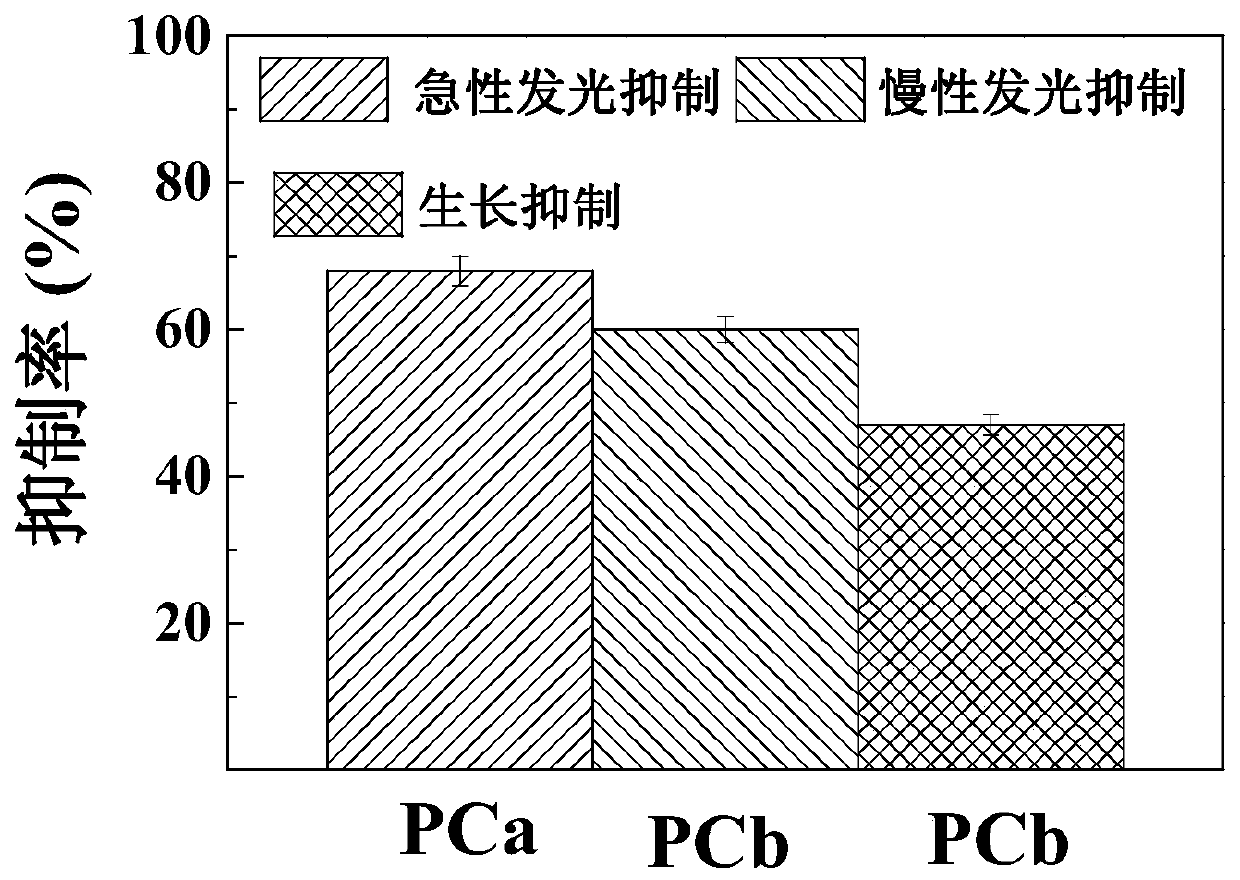Growth effect and acute and chronic toxicity detection method of luminous bacteria
A technology for luminescent bacteria and toxicity detection. It is used in chemiluminescence/bioluminescence, color/spectral property measurement, and analysis by chemical reaction of materials. It can solve the problems of low test efficiency, single evaluation method, and limited number of samples. , to achieve the effect of saving manpower, simple process, comprehensive and accurate detection effect
- Summary
- Abstract
- Description
- Claims
- Application Information
AI Technical Summary
Problems solved by technology
Method used
Image
Examples
Embodiment 1
[0053] A method for detecting the growth effect and acute and chronic toxicity of luminescent bacteria, comprising the following steps:
[0054] Step 1. Collect the soil to be tested: select 4 different lakes, use a grab sampler to collect 0-10cm sediments on the surface, pass through a 1.8mm mesh sieve to remove impurities, air-dry and crush until the particle size is less than 2mm for later use, and number each sediment 1 , Precipitation 2, Precipitation 3 and Precipitation 4.
[0055] Step 2. Preparation of aqueous phase experimental samples: Mix 3 g of sediment with 30 mL of 3% (m / v) NaCl solution, shake in a shaker at 20°C for 12 hours, and filter with a 0.45 μm filter membrane to obtain the mother liquor of the aqueous phase extract , with 3% NaCl solution as the diluent, the prepared aqueous phase extract mother liquor was diluted according to the 1:2 serial gradient dilution method to obtain 100%, 50%, 25% and 12.5% aqueous phase experimental samples.
[0056] Step ...
Embodiment 2
[0073] A method for detecting the growth effect and acute and chronic toxicity of luminescent bacteria, comprising the following steps:
[0074] Step 1. Prepare the organic phase experimental sample: use the soil to be tested in Step 1 of Example 1, mix 1 g of sediment with 30 mL of acetone and hexane mixed at a volume ratio of 1:1, and heat the mixture in a microwave digestion furnace at 115 ° C. After treatment for 20 minutes, the extract was passed through a 0.45 μm filter membrane, the filtrate was evaporated to dryness with a nitrogen blower, and the residue was dissolved in 4 mL of dimethyl sulfoxide (DMSO) to obtain an organic phase extract; before the experiment, the organic phase extract was dissolved in 3% NaCl solution to a final concentration of 1%, this solution is the mother liquor of the organic phase extraction solution; the 3% NaCl solution is used as the diluent, and the mother liquor of the organic phase extraction solution is diluted according to the 1:2 ser...
PUM
 Login to View More
Login to View More Abstract
Description
Claims
Application Information
 Login to View More
Login to View More - R&D
- Intellectual Property
- Life Sciences
- Materials
- Tech Scout
- Unparalleled Data Quality
- Higher Quality Content
- 60% Fewer Hallucinations
Browse by: Latest US Patents, China's latest patents, Technical Efficacy Thesaurus, Application Domain, Technology Topic, Popular Technical Reports.
© 2025 PatSnap. All rights reserved.Legal|Privacy policy|Modern Slavery Act Transparency Statement|Sitemap|About US| Contact US: help@patsnap.com



